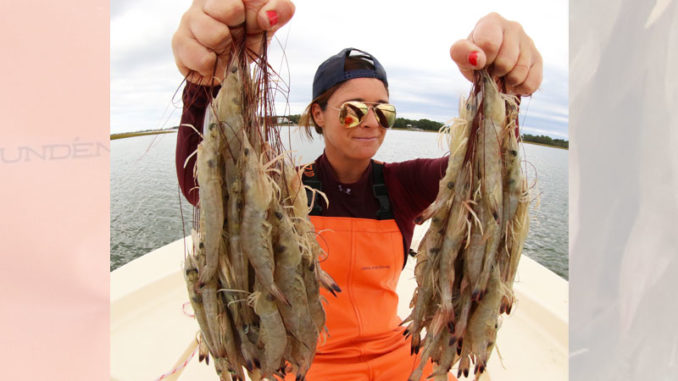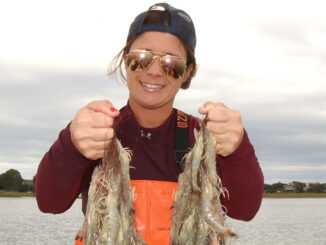
Deep-hole shrimp limit increased on May 1
South Carolina’s annual shrimp-baiting season doesn’t open until the fall, but shrimping without bait begins on May 1. Commonly known as deep-hole shrimping, it arrives each year with little fanfare. But May Day is a welcome date for those who enjoy tossing a net.
No baiting is allowed, but if you find the right hole, no baiting is needed. For Amy Anderson of Mt. Pleasant, S.C., May 1 ranks up there with Dec. 25 on her list of favorite days of the year.
“May is a great time for deep-hole shrimping. It’s warm enough to enjoy time on the water, the shrimp are in the deep holes, and the jellyfish aren’t as thick as they will be later in the year. It’s a great time to catch some red legs,” she said.
Charleston area rivers like the Folly, Ashley and Cooper offer good deep-hole shrimping. The best spots are usually where a smaller creek empties into the main river.
“That’s usually where the deepest holes are,” Anderson said. “A depth finder helps pinpoint those holes. The depth can change from 15 feet to 35 feet to 50 feet very quickly. You want to know where that deepest hole is; a depth finder can help you do that quickly. It can help you find that hole over and over without wasting time.”
Deep-hole shrimping has advantages over shrimp-baiting
Anderson, who prefers deep-hole shrimping even during shrimp-baiting season, said it requires less equipment and makes for a less-crowded waterway. It also doesn’t require a special license like shrimp-baiting does. A recreational saltwater fishing license is all that’s needed.
“Baiting requires all those poles. Other shrimpers have to keep a certain distance away from your poles. When deep-hole shrimping, the only equipment that you absolutely must have is a deep-hole net,” she said, referring to the specialized cast nets that have a wide band of weighted material along the edges that helps it open fully on its way to the bottom.
“And when deep-holing, several boats can be in a really small area and targeting the same deep hole without crowding each other out. That’s not possible when shrimp-baiting,” said Anderson, who said you can always find a deep hole close to boat landings around Charleston.
“You can be within sight of the boat landing in most of these rivers, and you’ll be on top of some deep holes that provide good shrimping,” she said. “Once you get to the mouth of a small creek that empties into the main river, start paying attention to your electronics. Find the deepest hole and try to get your net to land right on that hole. If you’re a foot off, you might not catch anything. But when you get the net in exactly the right spot, you’ll bring up dozens of shrimp on one cast.
Deep-hole shrimping is actually legal year-round for a very limited number of shrimp. But from May 1 through Dec. 15, the daily limit increases to 48 quarts whole or 29 headed, per boat.


